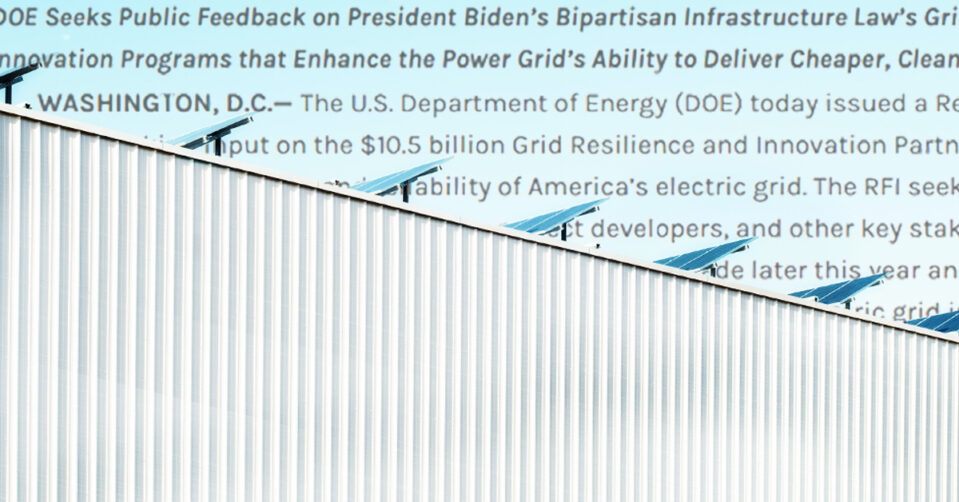Get a GRIP on DOE Funding
Jessica Bell (Energy Director & Deputy Director) / November 10, 2022

The acronym soup of federal laws that will turbocharge clean energy is ready for primetime. This week, we’ll take a look at the Infrastructure Law, signed last year (sometimes referred to as the BIL or the IIJA).
The Infrastructure Law puts billions of dollars into grid resilience and development over the next five years. This is an opportunity for state action to modernize and decarbonize the power grid while ensuring that benefits flow equitably to communities. The Department of Energy recently announced an important step in implementation: the Grid Resilience and Innovation Partnership (GRIP) program.
The GRIP program has three components: grid resilience grants, smart grid grants, and the grid innovation program. Each of these programs will provide up to a 50% cost share for projects designed to increase grid reliability and resilience, for example by addressing problems like prolonged outages following a storm. Applications will have to include a Community Benefits Plan to show how the project advances the workforce and equity goals of the GRIP program.
Grid Resilience Grants. This $2.5 billion program will fund grid operators, generators, fuel suppliers, and similar entities to modernize and strengthen the grid against extreme weather and other disasters that are exacerbated by climate change. (BIL section 40101(c.))
Smart Grid Grants. This $3 billion program will focus on improving the ability of the transmission system to integrate electric vehicles and support building electrification. The Department of Energy is encouraging teams of applicants with diverse sets of stakeholders, including state and local governments, tribal nations, and universities. Awards will be up to $30 million each. (BIL section 40107)
Grid Innovation Program. This $5 billion program is aimed at collaborations between states, Tribes, local governments, state commissions, and electric sector entities to enhance resilience. Projects in this program will take innovative approaches to transmission, storage, and distribution infrastructure to promote resilience and reliability. Awards are in the $50 million to $250 million range, and the Department of Energy is proposing to increase funding for interregional transmission projects to $1 billion per award. (BIL section 40103(b.))
The Department of Energy should announce the opportunity to apply for funds for fiscal years 2022 and 2023 later this year.
Another development is the Transmission Facilitation Program. That program brings a lot to the table: $2.5 billion through loans, public-private partnerships, and arrangements where the Department of Energy is the anchor tenant for projects, buying up to half of the capacity of a transmission project and then selling that capacity. The Department of Energy plans to issue an initial call for proposals for projects where the Department would be an anchor tenant in 2022. Eligible projects must plan to begin commercial operation by December 31, 2027. The Department of Energy plans a second solicitation in early 2023 that invites applications for all three forms of support in the program.
These funding opportunities are among many programs designed to boost clean energy resources around the country. Check out our last commentary on opportunities in the IRA, the Inflation Reduction Act.
This page was updated on March 25, 2024 to better meet our accessibility standards. To see the page as it was initially published, click here.
